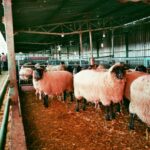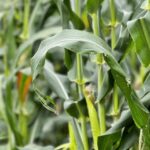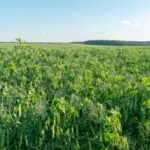Aquaponics farming is a sustainable and innovative agricultural practice that combines aquaculture (raising fish) with hydroponics (growing plants in water). This closed-loop system is gaining popularity among South African farmers due to its water efficiency and potential for high yields. However, like any farming method, aquaponics requires a solid understanding to avoid costly mistakes. Below, we explore ten common pitfalls and how to avoid them.
1. Neglecting Proper System Design
A poorly designed aquaponics system can lead to inefficiencies and failure. Farmers often underestimate the importance of balancing fish tanks, grow beds, and filtration systems. The ratio of fish to plants must be carefully calculated to ensure adequate nutrient supply without overloading the system.
Solution: Work with a professional to design your system or use reputable guides tailored for South African climates and resources.
2. Choosing the Wrong Fish
Not all fish are suitable for aquaponics. Some farmers select species that are not well-suited to the water temperature, pH levels, or local regulations, leading to high mortality rates.
Solution: Opt for hardy, locally available fish such as tilapia, catfish, or trout, which thrive in South Africa’s varying climates.
3. Poor Water Quality Management
Water quality is the backbone of aquaponics. Neglecting to monitor pH levels, ammonia, nitrites, and nitrates can stress or kill fish and plants.
Solution: Regularly test water parameters and adjust using natural methods to maintain a healthy balance.
4. Overfeeding Fish
Overfeeding is a common mistake, leading to uneaten food decomposing in the water, increasing ammonia levels, and harming both fish and plants.
Solution: Feed fish sparingly, ensuring they consume all the food within five minutes. Adjust portions based on fish size and population.
5. Ignoring Plant Selection
Farmers often choose plants that do not thrive in aquaponics systems or their specific climate, resulting in poor yields.
Solution: Start with leafy greens, herbs, and vegetables such as lettuce, basil, and spinach, which adapt well to aquaponics. Gradually experiment with other crops based on market demand and system capacity.
6. Inadequate Oxygen Levels
Low oxygen levels in the water can cause fish stress, slow plant growth, and disrupt the nitrification process.
Solution: Install efficient aeration systems like air stones or pumps to ensure proper oxygenation for both fish and plants.
7. Overloading the System
Adding too many fish or plants too quickly can overwhelm the system, leading to nutrient imbalances and poor performance.
Solution: Start small and gradually increase the fish and plant load as you gain experience and confidence in managing the system.
8. Lack of Backup Systems
Power outages are a common challenge in South Africa and can disrupt water circulation, aeration, and temperature control.
Solution: Invest in backup systems such as solar power, generators, or battery-operated aerators to ensure continuous operation during outages.
9. Skipping Routine Maintenance
Many farmers underestimate the importance of regular system maintenance, leading to clogs, leaks, and equipment failures.
Solution: Develop a maintenance schedule that includes cleaning filters, checking pipes, and inspecting pumps to prevent unexpected breakdowns.
10. Failing to Plan for Market Demand
Producing crops or fish without understanding market needs can result in surplus produce or unsold stock.
Solution: Conduct market research to identify high-demand crops and fish species. Build relationships with local buyers, including supermarkets, restaurants, and community markets.
Aquaponics farming holds great potential for South African farmers, offering a sustainable way to produce food with minimal water use. By avoiding these common mistakes, farmers can maximize productivity and profitability while contributing to food security and environmental conservation. Whether you are a beginner or looking to scale up, proper planning, monitoring, and maintenance are key to success in aquaponics farming.
Are you ready to take your aquaponics venture to the next level? Start small, learn continuously, and stay committed to improving your system!
Join 'Farmers Mag' WhatsApp Channel
Get the latest Farming news and tips delivered straight to your WhatsApp
CLICK HERE TO JOIN






